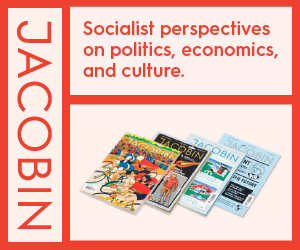China in the world
China’s role in the global economic and political system merits careful attention and debate

Xi Jinping visits a housing project near Luanda, the capital of Angola, constructed by a Chinese company, November 2010. Photo courtesy Xinhua News Agency.
China’s position in the world system is a crucial aspect of the friction between the nation and Western countries like Canada and the United States. It’s important, therefore, for people who want to alleviate these tensions—and keep them from devolving into a hot war—to understand China’s role in the global economic and political system. Because my grasp of China’s international activities is not yet adequate, I am reading work by several scholars working on this issue and I invite you to learn along with me by way of the micro literature review that I present here.
The Impact of China’s Belt and Road Initiative: From Asia to Europe, a 2020 book by Jeremy Garlick of Prague University of Economics and Business, assesses China’s signature foreign policy in the Xi Jinping era: the Belt and Road Initiative (BRI), which Garlick describes as a “state-led strategy of international expansion across Asia towards Europe” that stems from the consequences of China’s economic rise since 1978. He writes that the Chinese government has lifted hundreds of millions of its citizens out of poverty through the country’s cheap labour, overseas markets and imported commodities, inextricably linking China and the countries with which it trades.
BRI emerges in a context where China is flush with foreign exchanges reserves and in need of more imported raw materials and energy to keep the manufacturing process going. These include growing amounts of oil and natural gas from the Middle East, Central Asia, and Africa; iron from Australia; copper from Zambia; gold from Central Asia; and other metals and minerals from all over the world for computers and cell phones.
Garlick’s analysis is not especially left-wing. He writes, for example, that China has trade agreements with “states with authoritarian regimes” and that “the mere fact of striking [such] deals can serve to endorse a government which Western power regard as morally reprehensible.” It is, at best, incredibly naïve to suggest that “Western power” has any compunction about propping up tyrannies—or about taking its own “morally reprehensible” actions inside and outside of its borders—but it’s downright stunning that Garlick implies that “Western power” evaluates governments based even partly on a moral calculus because his commentary on Chinese government policies is generally clear-eyed and sober.

A second piece I read on China’s global position is an article by Claudio Katz, the Argentine Marxist economist, entitled “China: Neither Imperialist nor Part of the Global South.” Katz contends that capitalist restoration in China has not been total. For him, the country “exhibits the features of an empire in formation, but only in an embryonic form.” He regards China as reacting defensively to US aggression and says that, while China exploits Latin American resources, its activities in the region cannot be compared to the vastly more destructive ones of the US—a far more convincing position than Garlick’s acceptance of propaganda about the morality of Western powers. Katz also sees China as “a core country among the world’s central economies,” which “allows it to capture large flows of international value and benefit from its expansion with access to natural resources from the periphery.”
Katz rejects the idea that Lenin’s theory of imperialism can be used to prove that China is an example of an imperialist nation. Katz’s view is that Lenin’s conception helps explain the world as it was at the time of the First World War but provides minimal insight into the present global order. For Katz, the central feature of imperialism is a politics of domination and he does not think that Chinese conduct can be described as such. Although China has a military base in Djibouti, Katz regards this single installation as trivial compared to the constellation of American and European bases throughout Africa. He points out that, thus far, China’s economic expansion “has been achieved without firing a single shot outside of its borders.” At the same time, Katz says, China has given up on the internationalism of the Bandung Conference and the Non-Aligned Movement and divorced itself from the world’s popular struggles. “China avoids conflicts with the United States,” he writes, “without interfering in the outrages that Washington commits. The [Chinese] governing elite has buried all traces of sympathy with the resistances to the planet’s main oppressor.”
In an article published in Monthly Review, the University of Utah’s Minqi Li argues that while China has “developed an exploitative relationship with South Asia, Africa, and other raw material exporters, on the whole, China continues to transfer a greater amount of surplus value to the core countries in the capitalist world system than it receives from the periphery.” Consequently, Li—a Marxist and a prisoner in China from 1990-1992—contends that China can be described “as a semi-peripheral country in the capitalist world system.”
Whereas Katz rejects the notion that Lenin’s theory of imperialism can illuminate contemporary China’s foreign policy, Li assesses whether the characteristics that Lenin describes as constitutive of imperialism apply to China. For instance, Li writes that, between 2010 and 2018, the average rates of return on China’s overseas assets was approximately three percent whereas the rates of return on total foreign investment in China generally ranged from five to six percent. On this basis, Li concludes that Chinese interests are not generating the “super profits” that Lenin says imperialist powers extract. In 2018, Li goes on to say, China’s net investment income from abroad was negative.
Chinese Marxist political economist Minqi Li (born 1969), currently professor of Economics at the University of Utah. Li is known as an advocate of the Chinese New Left. Photo courtesy the University of Utah.
Li also writes that most of China’s investment abroad is sent to advanced capitalist countries, to tax-dodge in places like the Cayman Islands and British Virgin Islands, to China’s “special administrative regions” (Hong Kong and Macau), and to Singapore, an ethnic Chinese city-state. Li’s point is that once these locales are accounted for, 8.7 percent of China’s total stock of direct investment abroad *or 2.2 percent of China’s total overseas assets), are invested in Africa, Latin America, and the rest of Asia. He notes that:
This part of Chinese investment no doubt exploits the peoples in Asia, Africa, and Latin America of their labor and natural resources. But it is a small fraction of China’s total overseas investment and an almost negligible part of the enormous total wealth that Chinese capitalists have accumulated (China’s domestic capital stock is about five times as large as China’s overseas assets).
Li also looks at the average labour terms of trade, the ratio between total labour embodied in an average pool of one million dollars of imported goods and services and the total labour embodied in an average pool of one million dollars of exported goods and services. He notes that although the US labour terms of trade were less favourable after the 2008-09 financial crisis, in 2016–17, one unit of US labour could be exchanged for about four units of foreign labour. That same year, two units of Chinese labour could be exchanged for roughly one unit of foreign labour.
According to Li, China remains an economy exploited by the imperialist countries in the capitalist world system, although the degree of exploitation has sharply declined in recent years. In this respect, Li seems to differ from Katz, who sees China as among the world’s core economies, and Li’s essay is far more data-rich than Katz’s.
Yet Li also finds that by 2015-2017:
China had clearly established exploitative positions in South Asia and sub-Saharan Africa. One unit of Chinese labor can now be exchanged for about two units of labor from sub-Saharan Africa or four units of labor from South Asia…
If one adds up the population of South Asia, sub-Saharan Africa, and low- and middle-income East Asia (excluding China), the total population accounts for about 45 percent of the world population. Thus, China has established exploitative relations against nearly one-half of the world population. China can no longer be treated simply as a peripheral country in the capitalist world system.
The common thread in these readings—particularly in Katz’s and Li’s, which engage with Marxist theories of imperialism—is the argument that China no longer practices the radical internationalism that it sometimes did during the Mao period, but that its often exploitative global policies are far from equivalent to those of the US-led empire. I find this line of thinking convincing. But I’m still learning.
Greg Shupak writes fiction and political analysis and teaches Media Studies and English at the University of Guelph-Humber. He’s the author of The Wrong Story: Palestine, Israel and the Media. He writes a monthly column with Canadian Dimension and his work frequently appears in outlets like Electronic Intifada, F.A.I.R, The Guardian, In These Times, Jacobin, and The Nation.










